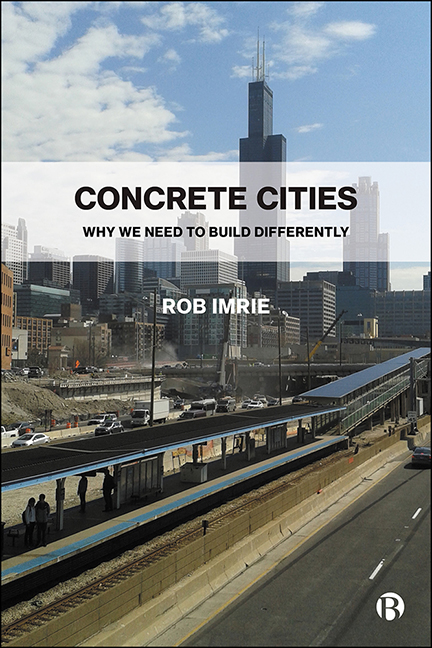Book contents
- Frontmatter
- Contents
- List of Figures
- About the Author
- Preface
- 1 Introduction: The Omnipresent Nature of Building
- 2 The Significance of Building and Construction
- 3 Building and the Construction State
- 4 Speculation and Building Booms
- 5 Disruption, Displacement and Dispossession
- 6 Demolition: Wasting the City and Teardown Building
- 7 Why Building More Housing Will Not Work
- 8 Building That Matters to People
- 9 Constructing for Species Survival
- 10 Building and Construction That Cares
- Notes
- References
- Index
9 - Constructing for Species Survival
Published online by Cambridge University Press: 30 April 2022
- Frontmatter
- Contents
- List of Figures
- About the Author
- Preface
- 1 Introduction: The Omnipresent Nature of Building
- 2 The Significance of Building and Construction
- 3 Building and the Construction State
- 4 Speculation and Building Booms
- 5 Disruption, Displacement and Dispossession
- 6 Demolition: Wasting the City and Teardown Building
- 7 Why Building More Housing Will Not Work
- 8 Building That Matters to People
- 9 Constructing for Species Survival
- 10 Building and Construction That Cares
- Notes
- References
- Index
Summary
Introduction
There is much awareness of the harm caused by construction to the environment but little that is being done to prevent or mitigate it. While politicians and the executives of leading corporate organisations deliberate and debate about the effects of building, their inaction is evident by the acceleration in global construction activity, including significant increases in the rates of material extraction, use of energy and deterioration of the earth's ecological and environmental systems. From Amazonia to Indonesia, vast tracts of land are being laid to waste to provide raw materials for construction and the trappings of Western lifestyles. The destruction of tropical forests is generating one of the largest mass extinctions to beset the earth, with, as Weisse and Goldman (2020: 1) note, the tropics having lost 11.9 million hectares of tree cover in 2019. Much of this was used in building projects, ranging from the construction of walls, floors and ceilings, to the reconstruction of boardwalks in US beach resorts (Rainforest Relief, 2013).
The loss of habitat and biodiversity is referred to by some observers as ‘ecocide’, or a process of widespread, global devastation and destruction of ecological systems (Higgins, 2010). Construction is at the forefront of ecocide and asset raiding the natural world, and in places like Amazonia, the demand by the building industry for its products is interlinked with land grabs, illegal logging and mining, and threats to the lives and habitation of indigenous people (Funes, 2019). Viana (1998, quoted in Taccioni et al, 2003: 8) estimates that in the 1990s, over 80 per cent of logging in Amazonia was illegal, with large quantities of timber sent to reputable building contractors, particularly relating to hardwood flooring. The US company LL Floorings, formerly Lumber Liquidators Flooring, is one of many that have flouted laws relating to the illegal importation of hardwoods, and in 2015, it was fined US$13.15 million by the US federal government for using timber that had not been sourced by legal means (US Department of Justice, 2016).
The actions of LL Floorings and countless other building contractors are implicated in a global supply chain that is depleting resources and despoiling the environment.
- Type
- Chapter
- Information
- Concrete CitiesWhy We Need to Build Differently, pp. 184 - 208Publisher: Bristol University PressPrint publication year: 2021

